43 Labrador Mixed Breeds (With Pictures)

Updated on

Labradors have been the most popular dog breed in the United States for quite some time. Their mild demeanor and affectionate temperament have endeared them to many.
Originally bred for hunting as a waterdog, the Labrador is as intelligent and energetic as it is loving. They make excellent working dogs, companions, and family pets.
But there are plenty of lovable dog breeds out there. What happens when you mix the iconic Labrador with one of these other excellent breeds? Luckily, Labradors have been crossed with so many other breeds that we don’t have to guess. They’ve even been mixed with some interesting breeds that might surprise you! Let’s take a look at 43 of the best Labrador mixed breeds.
The 43 Labrador Mix Breeds
1. Boxador (Boxer and Labrador mix)

Boxers are known for their bouncy, spunky, highly-energetic nature, which definitely tends to show through with the Boxador. Labs can also be a high-energy breed at times, so when mixed with a Boxer, expect your Boxador puppy to be rambunctious, ready to go, and a complete goof!
The Boxador can be a pretty large dog, often reaching weights of 80 pounds while standing about 18 inches tall. All that size can make a Boxador quite the bull in a china shop when their excitement grows! But it also makes them adorable, and their loving temperament endears them to every member of the family.
2. Golden Labrador (Golden Retriever and Labrador mix)
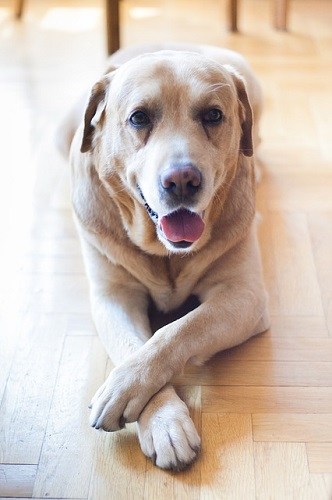
The Golden Labrador is also called the Goldador sometimes. Like the Labrador, the Golden Retriever was bred as a hunting dog, so they both have plenty of intelligence and the desire to please their owners. This results in a dog that’s easy to train and excellent at performing tasks.
Likewise, they make excellent family dogs. Golden Labradors have a friendly disposition similar to both parent breeds. When they’re mixed, the puppies tend to have shorter hair from the Lab side of the family, though sometimes you’ll find them with the longer Retriever coat.
3. Boston Lab (Boston Terrier and Labrador mix)
This may seem like a very unlikely mix. After all, the Boston Terrier is just a fraction of the size of a Labrador Retriever! But surprisingly, the Boston Lab is a great pup with a friendly and loving personality that makes it perfectly suited for families.
These dogs love to please their owners and will go out of their way to do so. They are also highly intelligent and much calmer than most pure Labs thanks to the more easy-going demeanor of the Boston Terrier. But look out, because the Boston Lab does sometimes show their stubborn side! They’re also attention hogs, so make sure you have plenty of time to show this little pup lots of love!
4. Labsky (Siberian Husky and Labrador mix)

Siberian Huskies tend to display a lot of the same desirable personality traits as the Labrador Retriever. They’re both known to be loyal, loving dogs with a playful and affectionate temperament. When combined to make a Labsky, also called a Huskador, you can usually expect the offspring to display a similar personality. Huskies are pack animals, even more so than other dogs, so they don’t do well if left alone for long periods.
Huskies can also be a bit stubborn at times, but Labs are known for their obedience and intelligence, which can temper the stubbornness in the Labsky. But they’re known to be extremely loyal to their family, forming strong bonds with each member.
Labskies can be about 24 inches tall and weigh around 80 pounds. They often inherit the long, thick coat of the Siberian Husky. This means year-round shedding and lots of maintenance.
5. Labraheeler (Blue Heeler and Labrador mix)
Blue heelers, also commonly known as Australian Cattle Dogs, are some of the best herding dogs around, but they’re also full of energy that needs constant release. When mixed with a Lab, the resulting offspring is just as high energy and can still have plenty of herding instinct left over. Be careful that your Labraheeler (also known as a Lattle) doesn’t start herding the children by nipping at the backs of their feet!
Both parent breeds of the Labraheeler are highly intelligent working dog breeds. Because of this, the Labraheeler is great at training and can easily learn to perform tasks or follow obedience commands. But they’ll have an excess of energy and will need to be exercised each day, so only pick a Labraheeler if you have the time and energy to exercise a hyperactive dog daily.
This is a rare breed, but despite their rarity, they make excellent pets because of their loving demeanor and undying loyalty to their family.
This breed sheds non-stop, so expect lots of loose hair and plenty of grooming time. They’re also quite energetic and will need plenty of exercise. But thanks to their high levels of intelligence, they can be trained well and will easily learn obedience commands.
6. Bassador (Basset Hound and Labrador mix)
The Bassador is a unique combination that you might not expect to even work! But the result is surprisingly cute; a small to mid-sized dog that looks like a small lab with short legs and big, floppy ears.
Basset Hounds don’t have the longest lifespans. What they do have are some known medical concerns. They also have interesting body proportions that can actually result in mobility issues because of how short their legs are compared to their body length.
Once mixed, any of these issues might show up in the offspring. If you’re going to pursue a Bassador, ensure that the Basset Hound parent is in excellent health with no major health concerns.
7. Dachsador (Dachshund and Labrador mix)
It’s a strange mix to picture; the short, long body and stubby legs of a wiener dog mixed with the lean and strong Labrador Retriever. But surprisingly, the result is a Dachsador with a very pleasant demeanor that’s rather quiet overall. They’re not going to bark much, but they’re still alert and can do well with keeping watch.
The Dachsador is starting to gain popularity. They were originally bred to reduce the health issues that both Labs and Dachshunds commonly display. The result is a hardy breed that’s not susceptible to very many health concerns. They’re also quite easy to groom since they usually have a short coat with wiry hair that needs very little attention.
8. French Labrador (French Bulldog and Labrador mix)

French Bulldogs are easy-going and low-key, but they’re also very short and stubby! Labradors are more playful and upbeat and quite a bit larger. Put them together, and you get a mid-sized pup that’s extremely friendly and manages to be outgoing without having excessive levels of energy.
The French Labrador is about as friendly of a dog as you could meet. They’re also very intelligent, which makes them rather easy to train. This is especially true because of how closely they bond with their owners who they desperately want to please.
9. American Bullador (American Bulldog and Labrador mix)
The American Bullador has a rugged and strong medium-sized body that’s covered in muscle. It was originally bred to maintain the best traits of the Lab while reducing the numerous health concerns that plagued the breed.
Because the American Bulldog is a calm breed that’s not too excitable, the American Bullador mix makes for one of the calmest Lab mixes you can find. They’re also incredibly loyal and loving, which is a major part of what makes this mix so popular, even if it does seem like a strange combination on the surface.
10. Corgidor (Welsh Corgi and Labrador mix)
The Welsh Corgi is a thick, long dog with short and stubby legs, so you might not think that it would mix well with the lean and athletic Labrador Retriever. The Corgidor that results when you mix these two breeds will have the stubby legs that distinguish the Corgi, but with the face and colors of the Labrador.
Both parents are known for their high levels of intelligence, which makes them easy to train since they’re quick learners. When combined, you’ll get that intelligence in a more calm package. And though the Corgidor may not look like a top-tier athlete, they’re actually very agile and athletic dogs with a strong work ethic.
11. Alaskan Malador (Alaskan Malamute and Labrador mix)

When you mix an Alaskan Malamute and a Lab, you can expect the resulting dogs to be big and strong with plenty of work ethic. The Alaskan Malador is that mix, though they’re sometimes called the Alaskan Lab.
Hailing from two well-respected working dog breeds, your Alaskan Malador will need a job to keep it happy. They want to work, and it’s a great outlet for their energy since they need so much exercise anyway.
Be aware of the Alaskan Malamute’s double coat, which is likely to manifest itself in your Alaskan Malador. It will need lots of grooming, and you’ll experience shedding on a level you’ve probably never seen before!
12. Labrottie (Rottweiler and Labrador mix)

The Labrottie, also called the Rottador, is a very attractive and large Lab mix. They often have the colorations and markings of a Rottweiler and can grow to the same size, up to 27 inches tall. This mix makes for a very large dog that can be somewhat unpredictable in temperament.
It’s possible for your Labrottie to take after the Labrador side of the family, displaying an overall calm and friendly demeanor. But it’s just as likely to inherit the Rottweilers guarding and protective nature. Rottweilers are very loyal, but they have a strong prey drive that can make them a danger around children if they aren’t properly socialized.
Make sure to properly train and socialize your Labrottie. It’s going to be a big dog but could have a loving demeanor and friendly temperament if socialized early and regularly. But Rottweilers have shorter life expectancies than Labs, so your Labrottie might not live as long as a purebred Labrador Retriever.
13. Labernard (Saint Bernard and Labrador mix)

Saint Bernards are the big teddy bears of the dog world. They’re massive but extremely gentle and calm. Labs are much more active and energetic, though. When bred together, the resulting Labernard could go either way. But what is certain with this mix is that it’s going to be a very sizable dog.
14. Borador (Border Collie and Labrador mix)
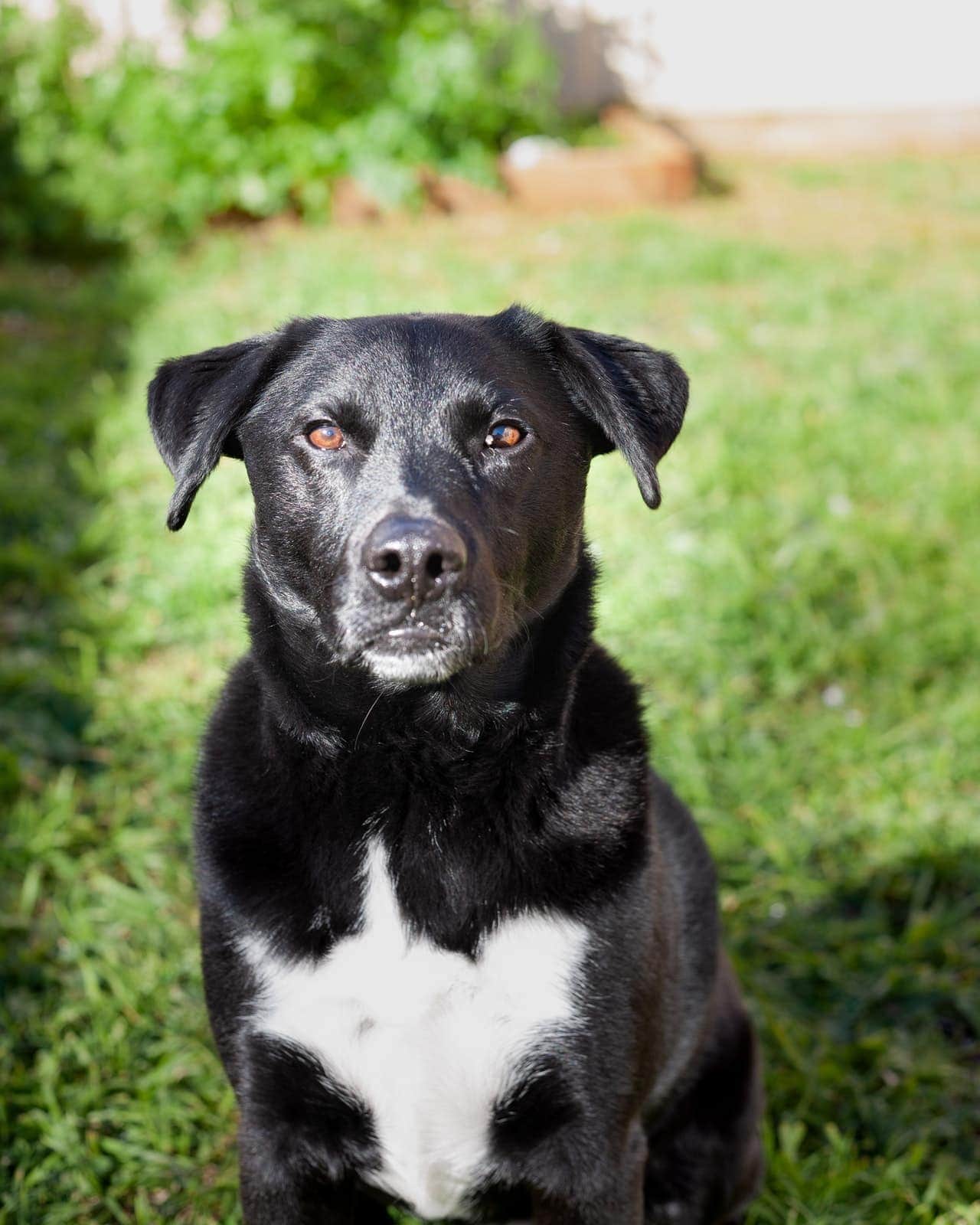
The Border Collie was originally bred as a sheepherding dog. They’re highly intelligent and just as energetic. When mixed with the Labrador to create a Borador, it’s anyone’s guess as to which temperament will reign supreme in the offspring.
Because both parent breeds were bred as working dogs, Boradors have the innate intelligence necessary for training. They can learn easily, but they can also have very high levels of energy from the Border Collie side of the family, so a firm hand and plenty of patience are necessary to train a Borador.
Because the Border Collie has much longer hair than a Labrador, the Borador is going to require some extensive grooming. They also have a natural herding instinct that tends to display itself around small children, so this breed is best for individuals or families with older kids.
15. Labradane (Great Dane and Labrador mix)

Labradanes tend to take most of their looks from the Lab side of the family, which results in a dog that looks like an oversized Labrador Retriever, thanks to the large genes that they’ll inherit from their Great Dane parent.
Great Danes are known to be very gentle, calm, and affectionate. When they inherit the Lab’s sociability, the result is a friendly and outgoing giant that’s just as affectionate as any dog you could meet. They make great family pets and even do great as service dogs. Despite their large stature, Labradanes only need a moderate amount of exercise.
16. German Sheprador (German Shepherd and Labrador mix)

The German Sheprador mixes the best traits of two of the world’s most popular pets; the German Shepherd and the Labrador Retriever. You’ll get the impressive work ethic, calm demeanor, and courageous attitude of the German Shepherd with the friendliness and affection of a Lab.
German Shepradors make excellent guard dogs. They’re naturally very protective, and their bravery knows no bounds. They’ll do anything to protect their family. They’re also incredibly intelligent, and since they come from two lines of working dogs, you’ll need to occupy your German Sheprador with a daily task or job to keep them fulfilled and prevent boredom.
17. Labollie (Collie and Labrador mix)
Collies are loyal and friendly dogs that were bred for sheepherding. Labradors are friendly and loyal dogs that were bred for hunting. Combine them, and you get the Labollie; a hard-working dog with above-average intelligence and an utterly friendly disposition.
Labollies are low-maintenance dogs that don’t need much grooming. They’re eager to please, which makes them easy to train. They have plenty of energy, but they also know when to be calm. Overall, they’re a great choice for first-time dog owners.
18. Aussiedor (Australian Shepherd and Labrador mix)

Aussidors are a colorful and beautiful mix. They have lots of energy and need tons of exercise. Their looks can vary drastically from pup to pup, but they’ll have plenty of endurance to keep playing and exercising for hours on end!
19. Dalmador (Dalmatian and Labrador mix)

Dalmatians are one of the most easily recognizable dog breeds in the world. But when you mix them with Labs, the resulting offspring can look very similar to a Dalmatian, or just barely show their Dalmatian lineage. The signature spots that the Dalmatian is known for might cover the entire coat of the Dalmador. But more likely, you’ll just see a few white and black patches.
20. Labrahuahua (Chihuahua and Labrador mix)
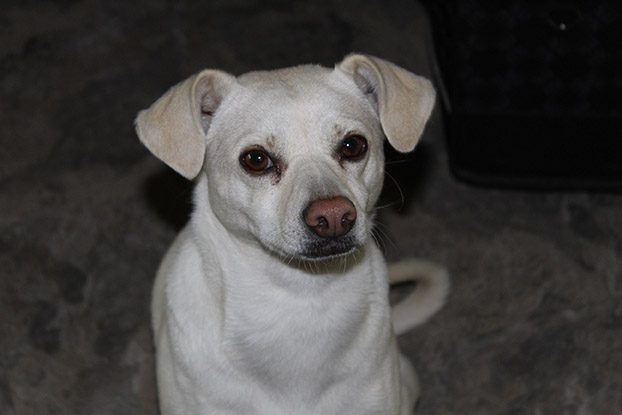
If there’s one mix you probably didn’t expect to find on this list, it’s likely the Labrahuahua. It’s hard to imagine a stranger mixed breed than the combination of a Chihuahua and a Labrador Retriever. But the Labrahuahua actually seems to work quite well!
It’s hard to predict what your Labrahuahua will look like. They can vary in size drastically and take their visual cues from either side of the family. They’re naturally protective and bark a lot, thanks to the Chihuahua in them. But they can also be playful and happy dogs from the Labrador side.
21. Labrakita (Akita and Labrador mix)
Labrakitas are large dogs with an impatient streak. They make excellent guard dogs since they don’t trust strangers, and they’re naturally protective. But this makes them a danger to children, especially considering their high prey drive. Because of this, they’re not the best choice for families with small kids.
This breed is highly intelligent but can still be difficult to train because of their stubbornness. Once trained, they can make excellent companions, but socialization will be very important with Labrakitas.
22. Beagador (Beagle and Labrador mix)
Labs have lots of energy and need lots of space to run around and play. But Beagles are much smaller with fewer space demands. When you combine them to create the Beagador, you get an energetic and playful pup who’s small enough to be satisfied with much less space than the average Lab. They’re great family dogs and can get along with everyone, including other pets.
They’ll never get too large, topping out at about 40 pounds and 24 inches in height.
23. Bullmasador (Bull Mastiff and Labrador mix)
The Bullmasador is one of the largest Labrador mixes. It gets its massive size from the Bull Mastiff side of the family and can sometimes be as heavy as 140 pounds. You might expect such a massive dog to need loads of exercise, but the Bullmasador is a bit of a paradox since it really just needs one walk each day.
This is a very loyal breed that makes an excellent companion. They’re also equally adept as guard dogs. They are very intelligent, which makes them easy to train. But due to their very large size, they’re not the best choice for first-time dog owners.
24. Spanador (Cocker Spaniel and Labrador mix)
The Cocker Spaniel was America’s favorite dog breed for years, so it only makes sense to mix it with the Labrador, America’s current favorite dog breed. But that’s not where the similarities end. Both of these breeds were originally used as hunting dogs, so the Spanador offspring they create are good-natured and very intelligent. They are excellent with children and make great family pets due to their calm, gentle personalities.
25. Labrasenji (Basenji and Labrador mix)
Basenjis are hunting dogs with an independent and quiet nature that has earned the name of the “barkless dog.” But they have a high need for exercise and can be quite difficult to train due to their independence. Luckily, when you mix a Basenji with a Lab, the offspring often takes on a bit of the Labrador’s more easy-to-train attitude.
Still, the Labrasenji is a dog that will need a lot of exercise each day and just as much patience to properly train them. They’re not very large dogs, but their stubbornness can make them difficult to deal with just the same.
26. Cavador (Cavalier King Charles Spaniel and Labrador mix)
Cavadors are incredibly friendly dogs, which makes sense since both parents are known for their friendly disposition. These dogs are often described as charismatic. They’re adorable dogs of medium size, reaching a maximum weight of around 55 pounds.
What’s unfortunate with the Cavador is the large number of health concerns that they inherit from the Cavalier King Charles Spaniel, which has an average lifespan of just 11 years. Look out for problems like mitral valve disease and syringomyelia.
27. Labernese (Bernese Mountain Dog and Labrador mix)

The Bernese Mountain Dog is a giant breed that weighs up to 110 pounds at a height of up to 28 inches. They have a short lifespan of around eight years, which is common with such large breeds. When mixed with a Labrador, the lifespan will likely even out between the breeds, so you can hope for a ten-year lifespan in a Labernese.
Labs tend to be friendly and trusting, but the Bernese Mountain Dog is the opposite. They don’t like strangers, and they can be nervous around people they don’t know. Socialization is extremely important with the Bernese Mountain Dog, and it will be just as important with the Labernese.
The Labernese could grow to be every bit as big as a regular Bernese Mountain Dog, so they’re not recommended for houses with small children. They can make great companions, but make sure to socialize early on to avoid the distrusting behavior that can develop in the Bernese Mountain Dog.
28. Labradoodle (Poodle and Labrador mix)
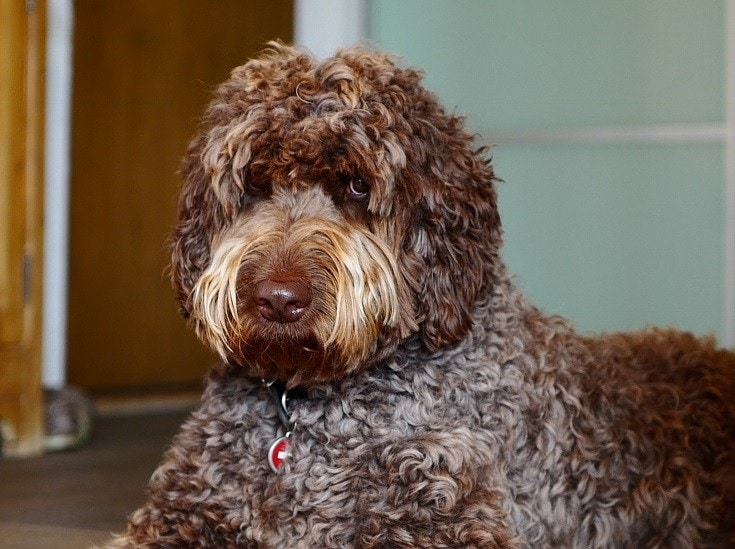
Spunky, energetic, and full of love and affection, the Labradoodle is currently the most popular Lab mix, and it’s easy to see why. They’re easy-going, even if they are a bit high-strung. They have lots of affection to give and want to receive the same from their person.
Labradoodles often inherit the curly mop of hair from their Poodle parent. Under those curls, all that hair has the potential to get very matted and messy, so you’ll really need to keep up with constant grooming with this breed. Of course, there’s no way to guarantee what type of coat your Labradoodle may end up with.
29. Afador (Afghan Hound and Labrador mix)
Afghan Hounds are a somewhat rare breed in their own right, so finding an Afador isn’t the easiest task, but they are definitely out there.
This mix makes for a pretty tall pup with much longer hair than you’d normally see a Labrador sporting. Expect to spend plenty of time grooming to keep all that hair in good condition!
Afghan Hounds aren’t quite as friendly and trusting as Labs are, so socialization is going to be of utmost importance with an Afador. They’ll also need plenty of exercise since they’re a pretty sizable dog.
30. Labrabull or Pitador (Pitbull Terrier and Labrador mix)

Pitbulls are muscular, stocky dogs with large heads and powerful bodies that are low to the ground. When mixed with the much leaner and longer Labrador, the resulting Labrabull can be leaner than a Pitbull, but still covered in muscle with a larger head than you’d find on a Lab.
Labrabulls are easy to care for and require little maintenance. They’ll have short coats that don’t need much grooming. What they do need is socialization. Pitbulls are not a particularly aggressive breed, but they’ve gotten a bad image. Your Labrabull may have a face that gives away its Pitbull lineage, so ensure that you socialize yours well, so it’s always friendly with everyone and doesn’t give anyone a scare!
31. Labmaraner (Weimaraner and Labrador mix)
Generally, mixing two dogs with similar backgrounds tends to produce desirable offspring with a mix of the parents’ positive traits. Such is the case with the Labmaraner, a mix of two gun dogs. Both parent breeds are bred to hunt and work in cooperation with their owners, so they’re quick learners that love to make their people happy.
Another trait both parents share is their susceptibility to separation anxiety. These are two breeds that want a lot of attention from their pack, and the Labmaraner will likely display the same. If you’re going to bring home a Labmaraner, make sure you’ll be there enough to fulfill their high need for attention.
32. Springador (English Springer Spaniel and Labrador mix)

When you mix two gun dogs, you often get offspring that can learn quickly and is great at performing tasks and training. The English Springer Spaniel is a gun dog just like the Labrador Retriever. The Spaniel is known for a high prey drive, so you’ll want to socialize the Springador early on to prevent this trait from becoming dominant.
Springadors will often have longer coats than pure labs, thanks to the long coat that the Springer Spaniels sport. It can result in a dog that looks like a somewhat shaggy lab. But springers can also have some issues with aggression and chasing. If you can, try to meet the Springer parent so you can see how they react and get a feel for what traits your Springador might exhibit.
33. Doberdor (Doberman Pinscher and Labrador mix)
Sometimes called the Labraman, the Doberdor is an interesting mix between a Doberman Pinscher and a Labrador Retriever. They seemed to receive the best traits from both breeds, resulting in a highly loyal, intelligent, and very protective breed.
Doberdors make excellent guard dogs because they’re naturally protective. But they can be a bit more difficult to train than other breeds, so they’re best suited for experienced dog owners.
34. German Shorthaired Lab (German Shorthaired Pointer and Labrador mix)

The German Shorthaired Pointer is a bold and courageous dog that was bred for hunting. When combined with the friendly and intelligent Labrador that was also bred for hunting, you get a smart, energetic dog that’s built to hunt and work; the German Shorthaired Lab.
Also known as the Pointerdor, these dogs are highly athletic and do exceptionally well in canine sports. But all that energy needs an outlet, and the Pointerdor requires a lot of exercise to avoid developing destructive behaviors.
35. Chabrador (Chow Chow and Labrador mix)

Chow Chows are some of the most unique-looking dogs around, with fluffy fur that makes them look like a giant teddy bear on four legs. They’re distrusting dogs, reserved around strangers (the opposite of the Labrador). When you mix them to create the Chabrador, the result is a friendly dog who is quite independent.
Set aside plenty of time to groom your Chabrador. They often inherit a lot of the puffy fur coat that their Chow Chow parents wear.
36. Labloodhound (Bloodhound and Labrador mix)

Bloodhounds and Labrador Retrievers were bred for similar purposes. Bloodhounds have some of the best noses in the canine world, and they’re used for tracking. Labs were bred as gun dogs meant to retrieve waterfowl. Put them together, and it’s hard to imagine a better hunting dog than the Labloodhound.
37. Labrador Corso (Cane Corso and Labrador mix)
The Cane Corso is a large and powerful breed of dog that’s used for law enforcement and military work. They’re known for their high levels of intelligence and easy trainability, which makes them excellent workers and guard dogs. When mixed with a Lab, you’ll get the best of both worlds: a friendly dog that’s highly trainable and intelligent with a physically fit and strong body.
The Labrador Corso is a large dog that’s just as playful as it is hard-working. They’re great as guard dogs and can be excellent family pets if socialized from a young age. But they need a strong leader they can look up to for proper training, so they’re not the best option for first-time dog owners.
38. Lab Pei (Shar-Pei and Labrador mix)
The Shar-Pei is an instantly recognizable breed distinguished by the rolls of loose skin that cover its body. When mixed with a Lab, the Lab Pei that results often has some of the folded, loose skin that the Shar-Pei is known for, though not generally covering the whole body.
The Lab Pei is muscular and compact, making for a strong dog that’s as loyal as any Lab. They make excellent family dogs, though they have a shorter lifespan than purebred Labs due to the numerous health conditions that Shar-Peis face.
39. Pugador (Pug and Labrador mix)
Pugs and Labs differ in just about every way possible. Pugs are known for being calm and laid back, while Labs are more energetic and playful. Pugs are also very small dogs compared to the much larger Lab. When you put them together, the Pugador that results can be up to 50 pounds with a Pug’s face on a Lab’s body! What a mix!
But you’ll be combining more than just their looks. You can expect your Pugador to have the calm demeanor of a pug with the playfulness and confidence of a lab, making for the perfect family pet.
40. Pyrador (Great Pyrenees and Labrador mix)
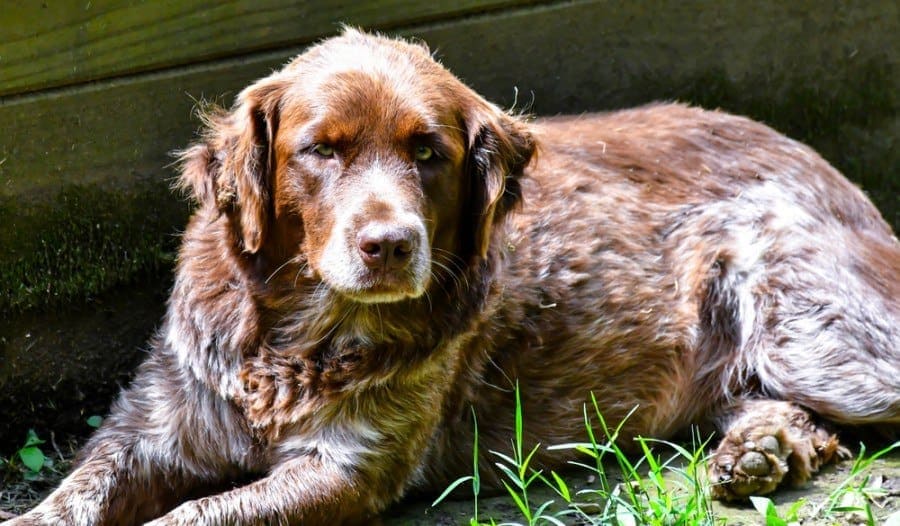
The Great Pyrenees may not have been bred as a hunting dog, but it was bred as a working dog, meant to protect flocks of sheep. This makes them trainable and intelligent, two traits that shine through when combined with a Lab.
The Pyrador is loyal to a fault and has a protective nature. They’re also very sizable dogs since the Great Pyrenees is often as heavy as 120 pounds. But despite their large size, the Pyrador is a very gentle dog that rarely ever displays any signs of aggression.
41. New Labralound (Newfoundland and Labrador mix)
The sweet, gentle giant Newfoundland breed is about as laid-back as dogs get. When mixed with the contrasting energy of the Labrador, the New Labralound’s temperament seems to balance out to a healthy mix of excitement and calmness.
The Newfoundland is a massive dog, so you can bet your New Labralound will be pretty sizable as well, probably around 100 pounds. It will also likely have the long, shaggy hair of a Newfoundland, so expect lots of shedding and grooming.
42. Rhodesian Lab (Rhodesian Ridgeback and Labrador mix)
Though they may look fierce, Rhodesian Labs are quite sensitive and just as affectionate. They like to give and receive lots of love. They can also be a bit difficult to train, and you’ll need to use only positive reinforcement since their sensitive side doesn’t respond well to harsh words and voices.
This is a large mix, thanks in part to the large size of the Rhodesian Ridgeback. But despite their size, they’re relatively calm dogs that are easy to get along with. When playtime comes though, they can outplay even the most energetic of children!
Because of their large size, it’s important to properly socialize a Rhodesian Lab consistently, starting from an early age. This is especially true if it’s to be a family dog that’s going to be around children.
43. Greyador (Greyhound and Labrador mix)
Greyhounds are known for their high speed and agility, which has made them the ultimate racing dog. When mixed with a Lab, the Greyador offspring will be slim and tall like a greyhound, with the combined athleticism of both parent breeds, which allows them to reach speeds of up to 40 miles per hour!
Naturally, the Greyador needs a ton of exercise. This dog is only a good fit for people with plenty of room for them to run and play and plenty of time to offer structured exercise daily. They can be easy to train, though they’ll display some stubborn independence at times.
Conclusion
The Labrador Retriever is one of the friendliest, most loyal dogs around, which is why it has been bred with just about every breed imaginable. Who doesn’t want to make their dog as friendly and loving as possible?
Though some of these crossbreeds might seem strange at first, they all create lovable, wonderful dogs that make excellent pets. Even though some of these mixes are quite unexpected, you can bet that they’re all special dogs that can easily earn a place in your heart.
Featured Image Credit: Parilov, Shutterstock











